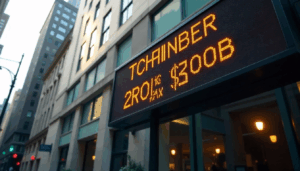Chart of the Week: Could ‘Hyperbitcoinization’ Be Evolving From Maximalist Theory to Tangible Trend?
As Bitcoin continues to hit new highs and institutional adoption expands, the once purely theoretical concept of hyperbitcoinization is beginning to look more like a potential macroeconomic trend than just a niche crypto fantasy.
The term “hyperbitcoinization” has long evoked visions of fiat currencies collapsing and Bitcoin rising to become the dominant global reserve asset. For Bitcoin maximalists, it represents the ultimate endgame—a financial world where individuals, companies, and even entire nations rely exclusively on Bitcoin, leaving traditional monetary systems behind.
While we’re still far from that reality, recent market behavior and institutional moves suggest that the seeds of this scenario may be sprouting.
Bitcoin’s Meteoric Rise
Bitcoin’s price has surged above $119,000, pushing its market capitalization closer to the levels of some of the world’s largest tech giants. Meanwhile, the U.S. dollar’s purchasing power continues to erode, and major financial players are evaluating Bitcoin as a serious investment asset, rather than a speculative curiosity.
“In previous bull markets, hyperbitcoinization talk was confined to crypto circles,” wrote FRNT Financial in a recent report. “Now, such discussions are becoming more acceptable in mainstream finance.”
Only a few years ago, the idea that major asset managers like BlackRock would launch Bitcoin products seemed improbable. Today, BlackRock’s iShares Bitcoin Trust (IBIT) has become a significant force, holding 706,008 BTC worth about $82 billion, according to BitcoinTreasuries.Net.
Institutions Step In
Corporations are raising funds to add Bitcoin to their balance sheets, signaling a long-term strategic shift. Politicians, including the current pro-crypto U.S. president, have even floated the idea of national Bitcoin reserves—a concept once unimaginable, although whether it comes to fruition remains uncertain.
Traditional financial systems are also adapting. A U.S. housing regulator is exploring whether crypto assets could be included in mortgage applications—a sign that digital assets are pushing deeper into established financial frameworks.
Meanwhile, Wall Street has firmly embraced Bitcoin, creating financial products and services that integrate the asset into traditional markets, making it more accessible to both institutional and retail investors.
Changing Ownership Patterns
One key signal that hyperbitcoinization could be inching closer is the shifting pattern of Bitcoin ownership. From 2014 through around 2020, individuals dominated Bitcoin holdings. Today, institutional investors, corporations, and even governments have emerged as significant holders, fundamentally changing market dynamics.
This shift suggests that hyperbitcoinization, though not yet fully realized, is progressing from a theoretical thesis into a trend with real market impact.
“In a market shaped by narratives and liquidity flows, hyperbitcoinization could evolve into more than just a concept—it could become a practical investment strategy,” FRNT Financial noted.
They also added that as hyperbitcoinization gains credibility and visibility, more investors—including individuals, institutions, and nations—could be motivated to HODL their Bitcoin holdings, reinforcing the asset’s scarcity and long-term value proposition.
Looking Ahead
Hyperbitcoinization may still be a distant possibility, but Bitcoin’s historic price run, changing institutional attitudes, and increasing global interest indicate that what once sounded like a far-off vision might be evolving into a significant macroeconomic narrative.
Share this content:













